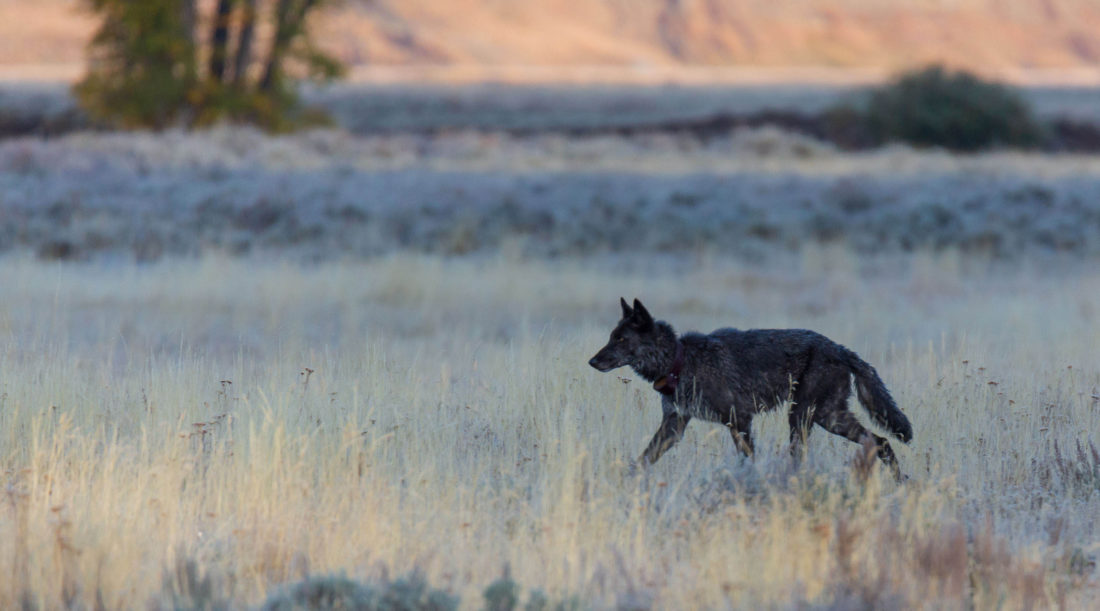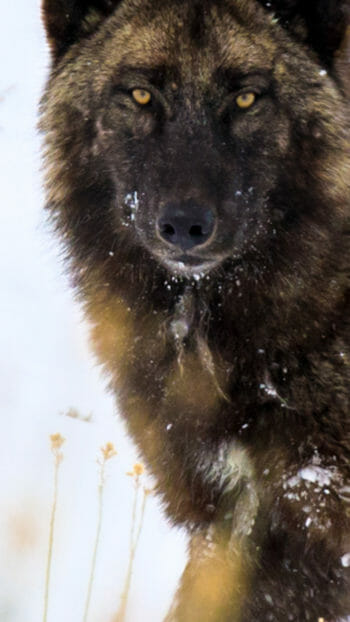Have you ever wondered what it took for a wolf to be the pack’s leader?
Is it dominance? Size? Aggression? Cunning?
What about a parasite?
A recent study has shined a light on a fascinating aspect of the inner workings of the North American gray wolf, one of the most iconic species on our continent, and a parasite so common that some of us may even have it in our own homes. If you’ve ever heard the common advice that pregnant women should not clean the cat’s litter box, you may have heard of toxoplasmosis.

Toxoplasma gondii (T. gondii) is a parasite that infects up to half of the world’s human population, and about 11% of the population of the U.S. It can infect just about any warm-blooded animal, with felines as the definitive host. The gray wolf acts as an intermediate host. With a dense population of wolves in northern Yellowstone that overlaps mountain lion territories (roughly 40 lions in the park), you could be seeing T. gondii at play without even knowing it if you venture out with us at Jackson Hole Wildlife Safaris to go wolf watching!


Let’s take a quick look at how this parasite operates
Definitive hosts are the end stage of the life cycle of a parasite that provide the environment it needs to sexually reproduce. The eggs are then shed through feces and picked up by another animal, such as a mouse. The mouse becomes infected and serves as an intermediate host, supporting the immature phase of the parasite. A cat comes along and eats an infected mouse, where T. gondii can then mature and sexually reproduce, shedding eggs once again, coming full circle and completing the life cycle. Think of the intermediate host as kids being nurtured at home before being sent off into the world (the cat) to become adults. Infection can also happen by ingesting infected meat, or it can be passed to offspring if the mother is infected while pregnant. Infection while pregnant can also cause a miscarriage or birth defects, which is why it is advisable for expecting mothers not to clean the litter box during this time. Oftentimes an intermediate host can be infected for years without even knowing it or having symptoms if they have a healthy immune system. As wolves serve as an intermediate host, this recent study looked at how T. gondii affected the behavior and ultimately their social dynamics, and with shocking results.

Connor Meyer, a wildlife biology doctoral student at the University of Montana, and Kira Cassidy, a biologist and research assistant for Yellowstone Forever published their findings in the Communications Biology science journal. Wolves were reintroduced in Yellowstone in 1995 after a long absence as a result of extermination by humans in the early 1900s. Since this groundbreaking reintroduction, the gray wolf, which has proven itself as a keystone species in this diverse ecosystem, has been a high priority of extensive studies by wildlife biologists. Consequently, we have almost 30 years of baseline data on the species which is extremely useful when exploring new questions. Considering other studies have observed T. gondii to significantly influence behavior in other species like hyenas, chimpanzees and even rodents, the role this parasite plays in our ecosystem has been understudied.
So, how does this influence who’s the leader of the pack?
From previous T. gondii studies, we’ve seen that once infected, the parasite spreads from the intestines to form cysts in the brain and muscle tissue causing acute toxoplasmosis. This is where it actually alters the hormones of the individual, and therefore behavior. This can lead to increased testosterone and dopamine which increases aggression and risk-taking behaviors. This includes reduced fear and avoidance of predators, and reduced fear of the unknown, resulting in “boldness”. Wolves already lead very risky and dangerous lives; one of the most dangerous times in a wolf’s life is if they decide to disperse from a pack to join a new one or to form their own. When they do this, they are in great danger of being killed by other packs. The surprising results of this study using samples collected from 229 wolves (which had been consistently studied throughout their lives) between 1995 and 2000 showed that those who were infected with T. gondii were 11 times more likely to disperse from a pack than wolves who were not infected. Furthermore, the odds of an infected wolf becoming a pack leader were 46 times greater than non-infected wolves! If fortune favors the bold, maybe it is fortuitous as a wolf to carry this parasite. Pack leaders are often simply the monogamous parents of the pack, and the only ones with breeding rights. However, the bold behaviors as a result of infection could affect how the entire pack that they lead behaves, having ripple effects throughout the ecosystem. These are questions that deserve further study.

This story illuminates the very real possibility that microorganisms could be having a far greater influence on the world around us than we realize, and maybe even on ourselves directly. It also shows us how these parasites have their own place in ecosystems, and are as natural a component as our wolves are. If we had the power to eliminate toxoplasmosis in our Yellowstone wildlife, could we see negative impacts in the balance? It is exciting to know that there is so much more at play in our natural world than we can see with our own eyes, and there is always more to discover!
Explore the National Park
Guided Yellowstone Tours
Sources
https://www.nature.com/articles/s42003-022-04122-0#Sec6
https://www.nature.com/articles/d41586-022-03836-9





